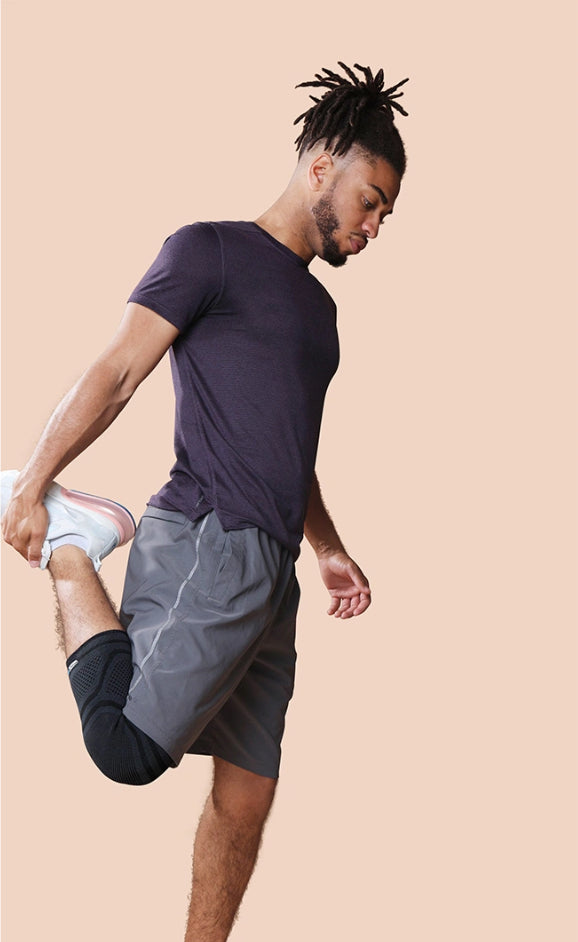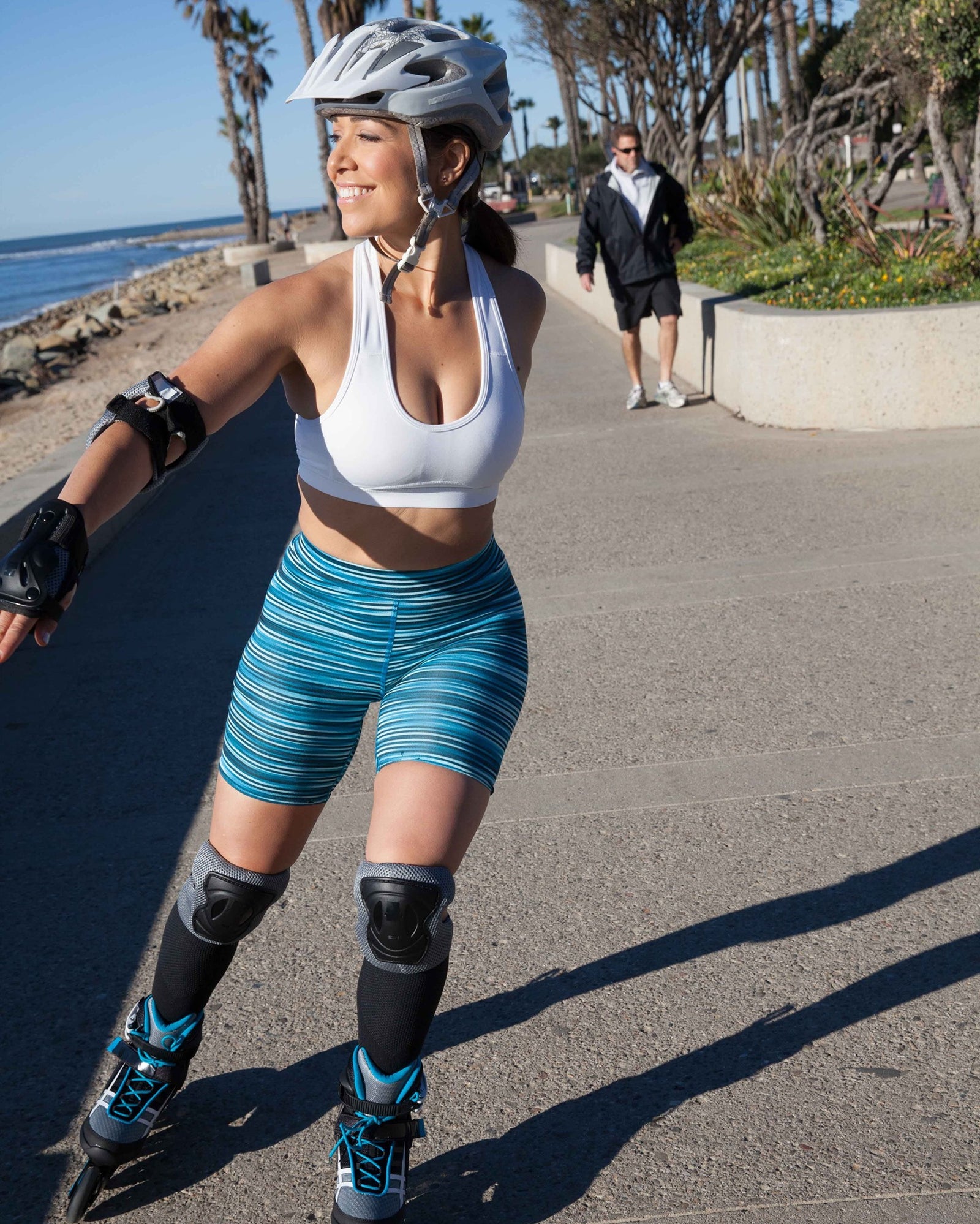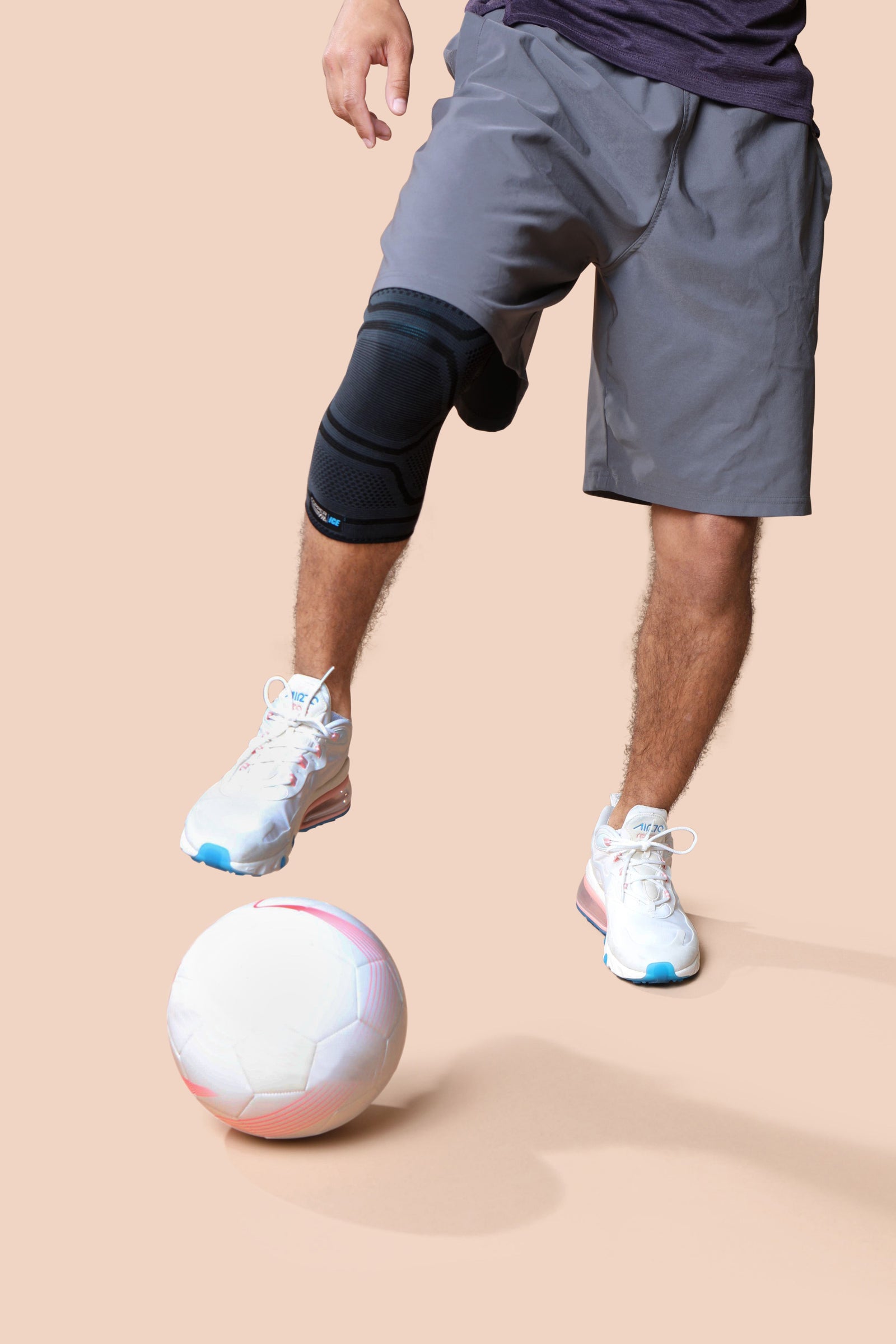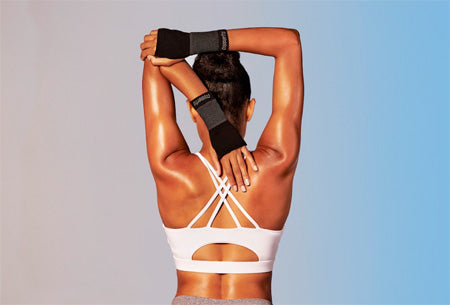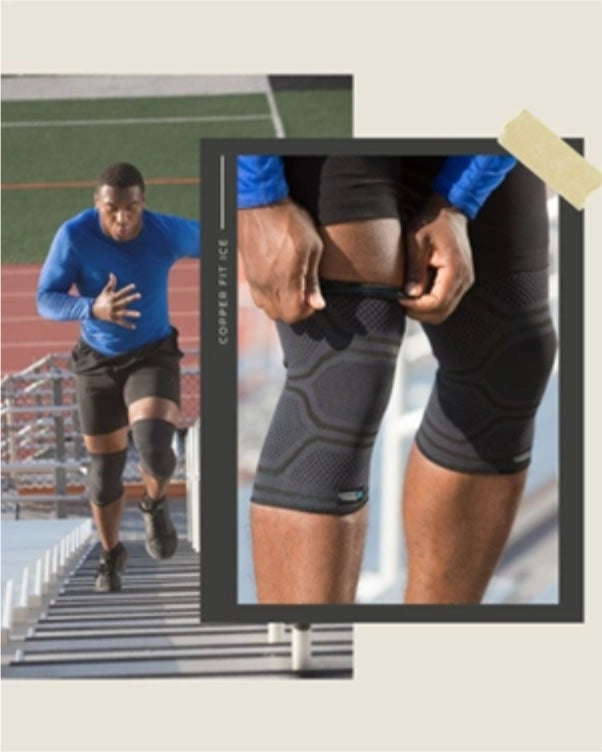
Article title: What Helps Sore Muscles After Working Out? | Copper Fit
URL slug: http://copperfitusa.com/blogs/education/what-helps-sore-muscles-after-working-out
Meta Description: Delayed onset muscle soreness is a part of recovery. Learn how to ease discomfort and recover smarter for performance with Copper Fit.
What Helps Sore Muscles After Working Out?
Key Takeaways
- Soreness is a natural part of building strength and means your muscles are adapting and getting stronger.
- Hydration, stretching, active recovery, compression, and proper nutrition all help support your body’s natural recovery process.
- Small, consistent recovery habits make a big difference in how quickly your muscles bounce back and how great you feel after workouts.
You gave it your all. But now, your muscles are letting you know they’ve put in the work. That post-workout soreness? It’s a sign your body is working hard to adapt, strengthen, and prepare for your next session.
While a little soreness is a normal part of the process, the right recovery techniques can help you feel better, move easier, and get back to doing what you love. This guide breaks down what really helps sore muscles after a workout, from hydration and movement to compression and rest.
What’s Really Going On When You’re Sore?
When you challenge your muscles in a new or intense way, you create tiny micro-tears in the muscle fibers. This is completely normal! In fact, it’s how muscles grow stronger. Your body repairs those fibers, reinforcing them so they can handle more next time.
That repair process is what causes the familiar feeling of tightness or soreness a day or two after your workout, known as delayed onset muscle soreness (DOMS).
What Can Help Alleviate Sore Muscles?
Soreness typically peaks between 24 and 72 hours after exercise and fades as your muscles recover. During this time, blood flow increases to deliver oxygen and nutrients to the affected muscles.
Supporting that natural recovery process through hydration, gentle movement, and circulation-boosting techniques can help reduce tension and help you feel ready to move again sooner.
Hydration
If you’re feeling stiff or sluggish after a workout, start with water. Hydration plays a big role in muscle recovery. When your body is dehydrated, muscles have a harder time transporting nutrients and flushing out byproducts that build up during exercise. This can make soreness feel worse and recovery slower.
Aim to drink water consistently throughout the day, not just after your workout. If your session was long or particularly sweaty, consider adding electrolytes to replenish what you lost. Electrolytes like sodium, potassium, and magnesium support healthy muscle function and help your body maintain balance.
Stretching and Mobility Work
Once you’ve cooled down, spend a few minutes stretching. Gentle, targeted stretches can help soothe tension and improve flexibility. Think of it as giving your muscles a little extra space to recover.
After tough workouts, light mobility exercises like foam rolling, yoga, or dynamic stretching can encourage circulation and help your muscles feel less tight. Focus on the areas you worked most, and move slowly with control. The goal is to help your body feel supported, not stressed.
Active Recovery
It might sound counterintuitive, but one of the best things you can do for sore muscles is keep moving. Active recovery means choosing low-intensity activities that increase circulation without straining your muscles.
Walking, swimming, or a gentle bike ride can help promote healthy blood flow, delivering oxygen and nutrients to muscles while helping your body remove waste products from exercise. This gentle movement supports your body’s natural recovery cycle, helping you feel more limber and less stiff.
The key is to stay light and easy. You’re not aiming for another workout, just movement that keeps your muscles warm and supported. Even 15–20 minutes can make a difference.
Compression
Compression has become a go-to recovery tool, and for good reason. Gentle compression on the muscles can help support healthy circulation, which aids in delivering nutrients where they’re needed most. It can also help your muscles feel more stable and comfortable as they recover.
When you wear compression gear during your post-exercise recovery, you’re helping your body do what it already does naturally: maintain steady blood flow and promote relaxation. It’s an easy, non-invasive way to support recovery and stay active while your muscles bounce back.
Compression sleeves, socks, or wraps can be especially helpful if you’re on your feet a lot after working out. Think of it as supporting your recovery in real time, so you can move through your day with less tension and more comfort.
Hot and Cold Therapy
Temperature-based recovery is a classic for a reason. Both heat and cold can be powerful tools when used correctly. It’s all about knowing when to use each.
-
Cold therapy is typically most helpful shortly after exercise or when soreness first sets in. It helps calm tight or tense muscles and supports recovery for recently worked areas.
- Heat therapy is often best for stiffness or lingering soreness from earlier workouts. Warmth helps promote relaxation and can make tight muscles feel more comfortable.
Some people like to alternate between heat and cold, especially for full-body recovery. The goal is to help your muscles feel at ease and keep you moving comfortably.
Get the Right Nutrients
What you eat after your workout plays a major role in how quickly your muscles recover. Exercise breaks down muscle fibers, and nutrients help rebuild them stronger than before. The key is balance: protein, carbohydrates, and healthy fats all work together to support the recovery process.
Protein provides the amino acids your muscles need for repair and growth. Carbohydrates restore energy levels so you’re ready for your next workout. And healthy fats, like those found in nuts, avocado, and fish, help reduce overall tension and support your body’s natural response to exercise.
Antioxidant-rich foods, such as berries, spinach, and colorful vegetables, can also help your body recover by combating oxidative stress that accumulates during intense training. Try to eat a nutrient-dense meal or snack within an hour of finishing your workout.
It doesn’t have to be fancy, just intentional, like a protein smoothie with fruit or grilled chicken with rice and veggies. The goal is to give your body what it needs to do its job naturally.
Get Enough Rest and Sleep
You can stretch, hydrate, and refuel, but nothing replaces rest. Muscles rebuild and strengthen when you sleep. Quality sleep allows your body to release growth hormones that repair tissue, restore energy, and regulate recovery.
Aim for seven to nine hours each night, and try to keep a consistent bedtime routine. Small habits (turning off screens early or keeping your room cool) can make a big difference.
We know it can feel tempting to go go go, but remember: rest is part of the process. When you give your body a chance to recover, you’re setting yourself up for stronger, more consistent performance.
Listen to Your Body
Everyone’s recovery looks a little different. Some soreness is normal, but sharp or lingering discomfort might mean you pushed too hard. The best athletes learn to tune in, not just push through. Supporting your recovery doesn’t make you weaker; it keeps you consistent.
Honor your body’s signals. If you need an extra day of rest, take it. If movement feels good, go for it. The more you respect your limits, the faster your body adapts and grows.
FAQ
How long does muscle soreness last after working out?
Most soreness peaks between 24 and 72 hours after exercise and fades naturally as your muscles repair. Light movement, hydration, and proper nutrition can help shorten recovery time.
What helps sore muscles recover faster?
Staying hydrated, getting enough sleep, stretching, using compression, and practicing active recovery all support your body’s natural recovery process. The key is consistency, because small habits make a big impact over time.
Should I still work out if my muscles are sore?
It depends on the type of soreness. Light, active recovery like walking, swimming, or yoga can actually help ease mild soreness. If soreness is intense or affects your form, give those muscles another day to rest.
The Bottom Line
At Copper Fit, we know recovery is just as important as your workout. We’ve seen firsthand how much stronger, more confident, and more capable people feel when they take recovery seriously.
We know what it’s like to deal with sore muscles that hold you back. That’s why we encourage recovery practices that work with your body, from compression and hydration to movement, rest, and everything in between. Every small step counts toward a stronger, more active life.
Sources:
Delayed onset muscle soreness : treatment strategies and performance factors | PubMed
Muscle blood flow and oxygen uptake in recovery from exercise | PubMed

